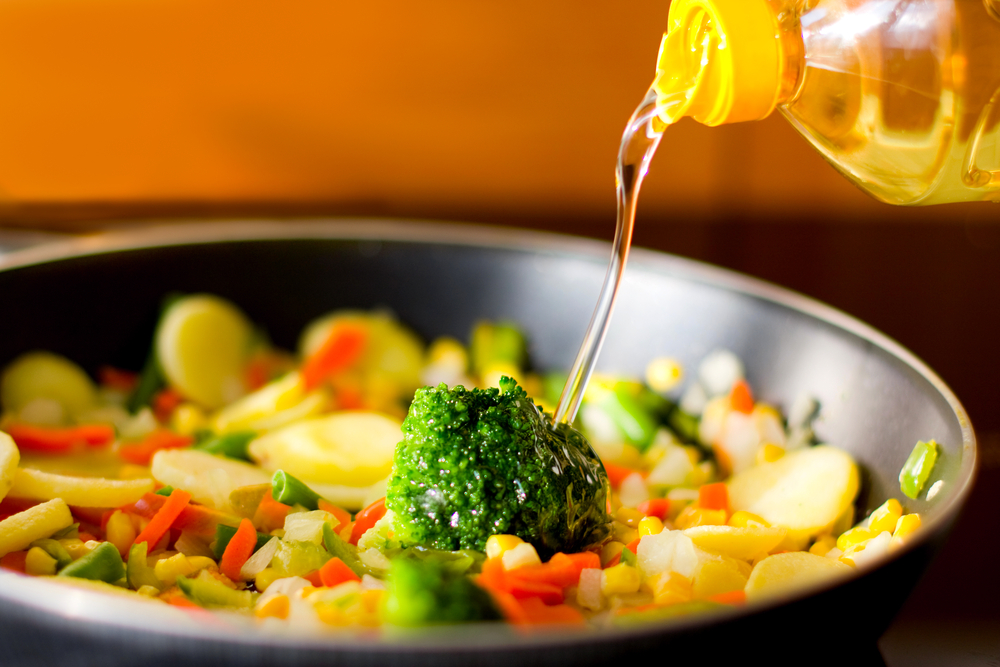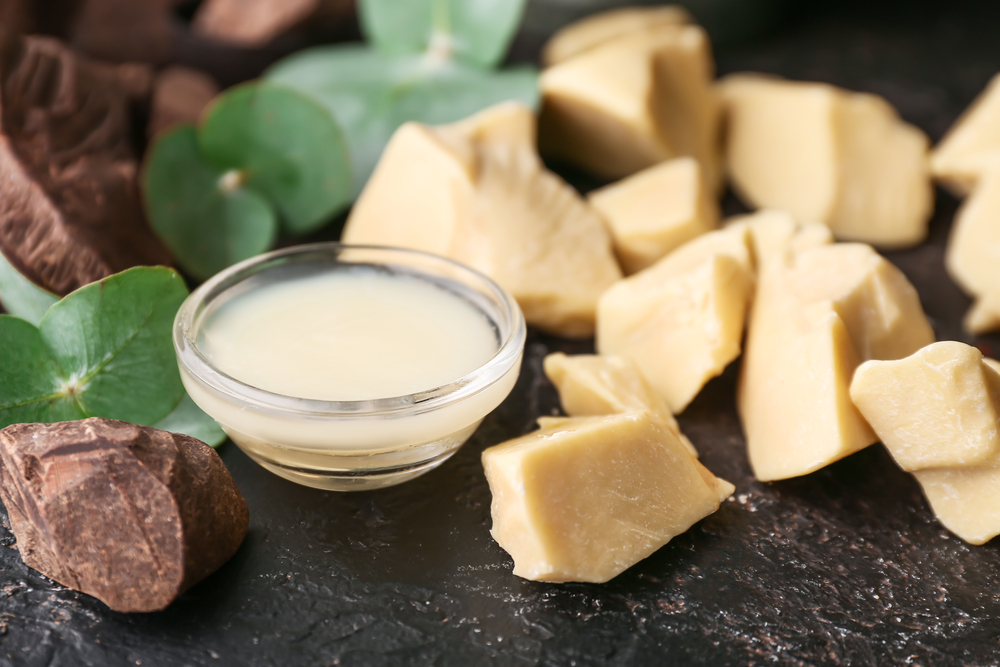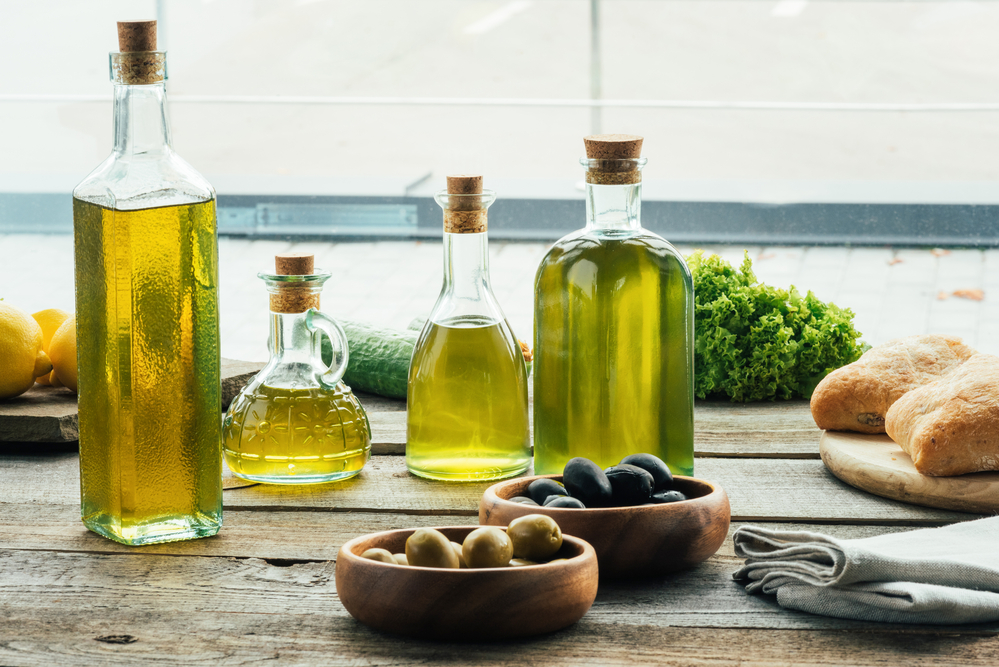If you purchase a new cookbook, chances are at some point in the baked goods section you’ll see a recipe that calls for margarine. Margarine is an artificial fat that is based on vegetable oils and then altered so it closely resembles butter. Recipes that need a solid fat often call for margarine because it remains solid at room temperature, giving the recipe extra structure.
However, for various reasons, someone may choose to avoid using margarine. This can make it hard to bake unless you know which are the best alternatives for margarine.
The best alternatives for margarine are:
- Butter
- Olive oil
- Apple sauce
- Coconut Oil
- Nut butter
- Cocoa butter
- Ricotta Cheese
- Cream cheese
- Lard
- Mashed banana
Margarine Overview
Margarine is often thought of as the original butter substitute. It can be used in almost all of the same ways as butter, you can use it in baking, recipes, and even spread it on some toast to eat with your breakfast.
This product is made from a mixture of vegetable oils and flavoring to create a solid block of fat. Functionally, it is very similar to butter and if a recipe calls for butter, most of the time you can use margarine in its place.
Nowadays, it is more well-known that margarine is not a healthy choice. Although it avoids dairy fat, it still contains lots of fats that some people may prefer to avoid. It can also have less than “clean” ingredients with lots of chemicals. This has caused a lot of people to want to avoid margarine and use a substitute.

What is a Healthy Alternative to Margarine?
If you can’t eat margarine due to allergies or simply want a healthier alternative, there are lots of options for you. Not all of them will be an exact match and some, like olive oil, won’t work in every function. However, with some salt and maybe a bit of sugar, these options can make a great replacement for margarine.
1. Butter
If you’re looking for a more natural option that won’t contain any of the modified fats that margarine has, look no further than butter.
Butter was the original margarine and is made from churned milk. This causes the fat to separate and clump together into lumps of butter. You can use butter in different baking recipes as a way of holding the other ingredients together. It also helps to keep baked goods moist by providing them with a fat source.
Of course, most people use butter on a daily basis as a topping. You can spread butter on a piece of warm toast or even use it to top off a stack of pancakes. Some people also like to use it in savory dishes like baked potatoes to give them an extra creamy finish.
The main downsides to butter are that it’s not considered the most healthy option and that it contains dairy. Butter contains loads of saturated fats which are fats that can clog arteries. This means that if your cholesterol is a concern and you’re trying to avoid heart disease, you may want to avoid large amounts of butter.
If you are sensitive to dairy or have a dairy allergy, you will also want to avoid butter. Although its protein content is limited, enough milk protein may make its way into the butter to cause stomach irritation or an allergic reaction.
2. Olive Oil
For Mediterranean folks, olive oil is no stranger to you, but it is still not commonly used in many other parts of the world. Olive oil is made from pressing olives and is further refined to create a delicious oil with a strong flavor that varies depending on the variety of olives used.
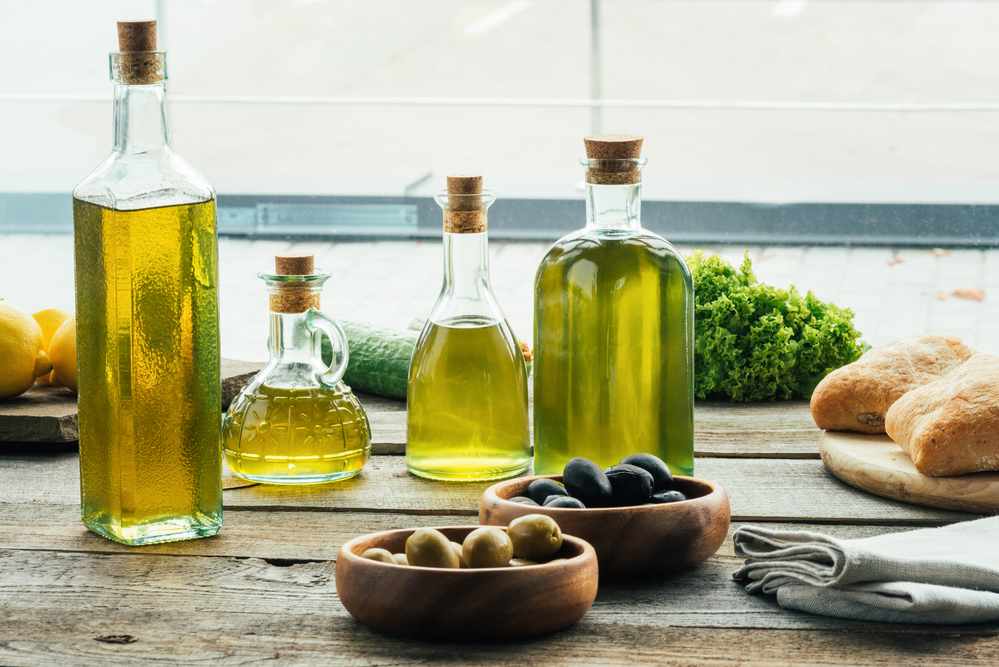
Olive oil can be a good substitute for margarine in many cases. You can use it in baking to give the baked goods a fat source. The fat source is necessary to keep the baked goods moist even after they have been baked and left out for a few days. If you try to completely omit the fat source, the baked good will come out crumbly and dry out very rapidly.
This oil can also make a good margarine substitute in the topping category. If chilled, the olive oil will somewhat solidify and become spreadable. Even if you don’t have the time to chill it, you can drizzle a small amount of olive oil on top of warm bread and add some garlic for a tasty Italian dish.
The only times when olive oil won’t work as a margarine substitute is in baked goods where the fat needs to stay solidified. In these cases, the olive oil will melt which could cause the baked good to basically melt away with it.
You may also want to consider the flavor of olive oil before substituting it. In some recipes, the flavor of olive oil may be more apparent and could be considered a negative flavor.
3. Apple Sauce
If you’re looking for a virtually fat-free substitute for margarine in baking, look no further than apple sauce. Although apple sauce will not work as a topping for a baked potato, it can be a great binder in baked goods.
When you add apple sauce to baked goods, it helps to bind the baked good together and keeps them moist. All without having to add an additional fat to your recipe. Apple sauce is also completely vegan and has no trace of dairy products making it a great option for people who are allergic to other options on this list.
Another added benefit of using apple sauce as your margarine substitute is that it comes in many different flavors. This can help to give extra flavor to your food without needing to add a lot of extra ingredients. Some of the flavors that you can find apple sauce in are blueberry, strawberry, mixed berry, and cinnamon.
One thing you may notice with apple sauce is that it does not bind the recipe together quite as well as butter or margarine. It can also cause the baked good to be slightly denser, so avoid using apple sauce with things like angel food cake that need to be light and fluffy.

4. Coconut Oil
If the olive oil substitute appealed to you but you are preparing a recipe that requires a solid fat, coconut oil could be a great option.
Some recipes that typically require a solid fat, like margarine, as opposed to a liquid fat, like olive oil, are biscuits, croissants, pound cake, and butter cookies. These recipes require that the fat is stable enough that air can be whipped into it and won’t melt away when the baked goods are left at room temperature.
Coconut oil is made by squeezing the fat out of coconut meat and then refining and packaging it. It has a slightly sweet flavor and a thick consistency even when it has been melted. Some people even like the flavor on its own and will use it as a natural alternative to mouthwash.
If you decide to use coconut oil, one thing to consider is the level of fat. Unlike olive oil, which is known for having healthier unsaturated fats, coconut oil contains high levels of saturated fats. These are what cause your cholesterol levels to skyrocket and can potentially cause health problems.
5. Nut Butter
Most of the other alternatives on this list have focused on baking. However, few of them have been good substitutes for margarine when it comes to spreading. If you don’t want to use margarine or butter on top of your toast or pancakes, try using nut butter instead.
Nut butter has a high-fat content which makes it a super satisfying topping and a great substitute for margarine or butter. Nut butter also has lots of protein and fiber which are important parts of a balanced diet.
This alternative comes in many different flavors and varieties. Some of the most common varieties that you can find in the supermarket are peanut butter, almond butter, cashew butter, and sunflower seed butter.
If you are allergic to peanuts or other nuts, always use caution when trying out a new nut butter. Even if the butter doesn’t contain the specific nut that you’re allergic to, there may have been cross-contamination during the manufacturing process. This can cause an allergic reaction in people with severe nut allergies.

6. Cocoa Butter
Just like coconut oil, cocoa butter is a great margarine substitute in baking because it is also solid at room temperature.
Cocoa butter is a byproduct of chocolate making and is made from cocoa beans. After the cocoa bean is ground up it is heated and then the fat is extracted leaving two products, cocoa butter and cocoa powder.
Cocoa butter has a soft, slightly sweet texture that makes it a great margarine substitute for baked goods. It is especially good in chocolate baked goods where the cocoa butter will help to further enhance the chocolate flavor.
Cocoa butter should pretty much only be used for baking. It does not spread well and also will not work as a fat to fry foods in like some of the other oils on this list. It also works best with sweet recipes, you may find the flavor slightly odd when used in savory dishes.
7. Ricotta Cheese
If nut butter isn’t your thing but you still want a margarine substitute that you can use as a topping, ricotta cheese could be the solution.
Ricotta cheese is a soft cheese that originated in Italy and is traditionally made from cow’s milk. Unlike other cheeses, ricotta cheese does not have as much of the whey, liquid, drained out of it. This allows the cheese to remain incredibly soft and spread very well.
This cheese has a mild flavor with a hint of sweetness and slight tanginess to balance out the sweetness. It is incredibly creamy and spreads easily making it a popular choice for toppings bread and other savory or sweet recipes. For an even sweeter treat, you can mix ricotta cheese with some fresh fruits and have it for breakfast as a sort of yogurt parfait substitute.
Keep in mind that ricotta cheese is made from cow’s milk, so it isn’t the best option if you are vegan or don’t tolerate cow’s milk very well. Ricotta cheese also cannot be used as a margarine substitute in baking or cooking.

8. Cream Cheese
Cream cheese may not be the first thing to come to mind when you think of margarine substitutes. However, it can be a great substitute in both sweet and savory dishes.
Cream cheese has a high-fat content, much like margarine, and can help to hold baked goods together while giving them a fluffy texture. If used for baking, you’ll want to remember that most cream cheese already includes salt which could cause a normally sweet dish to come out unbalanced and overly salted.
Cream cheese is also a great replacement for margarine in terms of spreads. You can top it with cinnamon sugar for a sweet breakfast or you can add some dill and chives to make a good savory spread for your toast or bagel.
This substitute is made from dairy so consider that if you have a dairy intolerance or allergy.
9. Lard
This option is placed toward the bottom of the list, not because of functionality, but simply because a lot of people don’t like it. Lard is a type of solid fat made from 100% animal fat that has been separated from the meat, liquified, then allowed to solidify. It serves a very similar function to margarine and has similar melting and solidifying points.
The main reason that you wouldn’t want to use lard is because of ethical reasons or if you’re making a sweet recipe. You can use lard in sweet recipes, but you may need to use a lot of sugar to cover up the more meaty flavor. However, it was the preferred fat traditionally used in biscuits and other savory bread.
Lard also makes great cooking oil. Just melt it down and use it in a pan to fry up whatever you’re cooking.
10. Mashed Bananas
This last substitute of mashed bananas is very similar to using apple sauce. It helps to make the baked good denser, sweeter, and keeps it nice and moist. However, it has a stronger flavor which many people don’t like as you will be able to detect a banana flavor no matter what other ingredients you add.
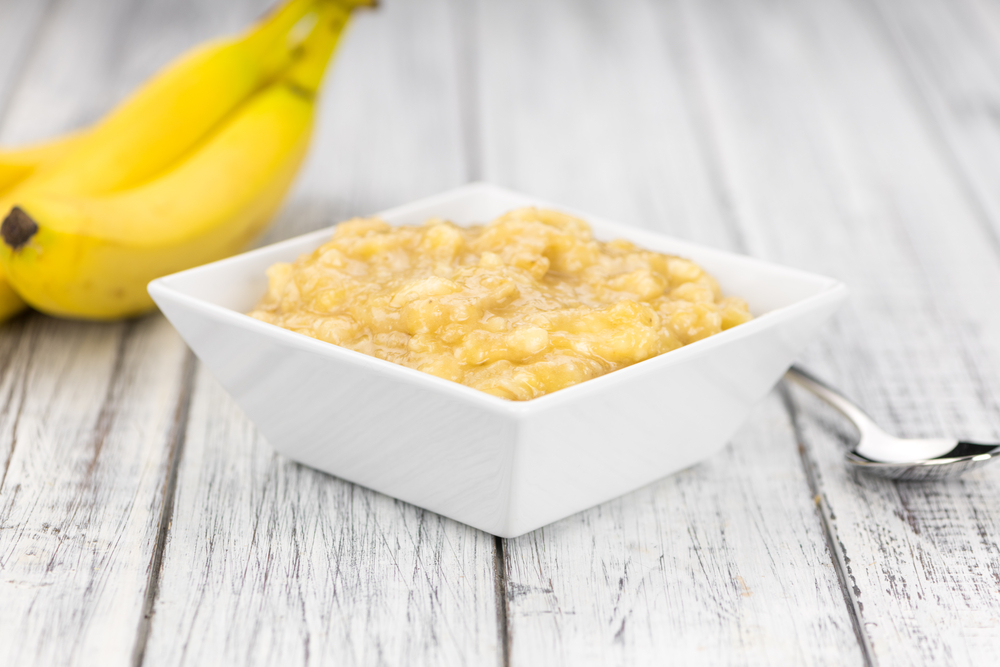
To use mashed banana you’ll simply take a very ripe banana, mash it as well as you can with a fork, then add it to the recipe. Start with a small amount then slowly increase the amount of mashed banana until it reaches the desired consistency.
What’s the Best Replacement for Margarine?
Out of all of these recommendations, the best replacement for margarine is hands down butter. Butter can be used in the exact same ratios as margarine, making it an easier option to slide into different recipes. You won’t have to worry about getting the ratio right, just add in whatever amount the recipe calls for.
Butter is also just as versatile as margarine. You can use butter in baked goods, as a spread, as a topping, and to cook foods in on the stovetop. Most of the other options on the list only work for one or two of margarine’s functions.
If you cannot tolerate dairy, you can use coconut oil or lard. Both of these contain no dairy and are solid fats at room temperature which is very important for many fat-heavy baked goods.
Conclusion
When in doubt about which margarine substitute to choose, carefully consider why your recipe needs margarine.
Does it call for margarine as a sweet topping? In that case, try cream cheese or ricotta cheese mixed with some sugar or fresh fruit.
Does the recipe require margarine to hold a baked good together and keep it from melting? If this is the case, try using coconut oil or lard, two fats that are solid at room temperature and give baked goods a good structure.
No matter why the recipe needs margarine, there is a substitute that can be just as good and, sometimes, even better.




